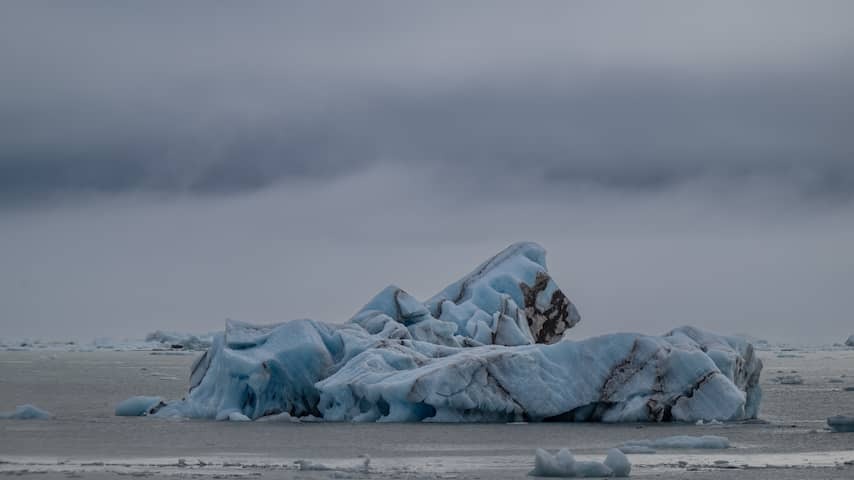
The Dutch climate will change drastically if the Gulf Stream slows down or stops due to climate change. This is stated by the KNMI in a new report. Winter temperatures will then be considerably lower, and ice may even be possible in the North Sea.
Due to the emission of greenhouse gases, the world is already almost 1.5 degrees warmer on average than in pre-industrial times. Europe is currently warming even faster than most other places. But that could change in the future, writes the KNMI after research together with the University of Utrecht.
There have been indications for some time that the Atlantic Meridional Overturning Circulation (AMOC), of which the Gulf Stream is a part, is slowing down due to global warming. This current has ensured a relatively mild climate in our part of the world for thousands of years. This is because the AMOC carries warm water from the tropics to Northern Europe.
Climate warming can disrupt this. Due to higher temperatures, the ice on Greenland melts and it also rains more in that region. That water flows into the ocean and makes the seawater less salty.
But salt water, which is heavier and sinks to the bottom, is precisely the driving force of the ocean current. An increase in fresh water weakens that motor.
3 degrees colder instead of 2.7 degrees warmer
The KNMI has now calculated what a weakening AMOC would mean for the climate in the Netherlands and Europe. In a scenario in which the temperature increase rises to 2.7 degrees in 2100 and the Gulf Stream slows down as a result, the sea ice will extend southwards. If the Gulf Stream comes to a standstill with a warming of 2.7 degrees, the ice can even reach into the North Sea.
The temperatures in the Netherlands will also drop in such a scenario. This is because more ice at sea reflects more heat back into the atmosphere.
According to the KNMI, the average winter temperature can drop to 3 degrees below the pre-industrial level, with regular extremely cold peaks. This could make Northwestern Europe the odd one out in an increasingly hot world.
Temperature increase ranges from 1.4 to 5.8 degrees
In the scenario in which the global temperature increase rises to 4.7 degrees in 2100, the chance that the Gulf Stream will come to a complete standstill becomes much greater.
It is striking that the temperature effect does not differ much from the moderate scenario. This is because the temperature of the sea is simply much higher with such a large warming. As a result, the sea ice cannot extend that far south.
According to predictions from the IPCC climate panel, the global temperature increase in 2100 can still range from 1.4 to 5.8 degrees. This depends, among other things, on how many greenhouse gases are still emitted.
A weaker or completely stalled AMOC also has other effects, warns the KNMI. This includes more drought in Europe and a faster rise in sea levels. The climate in Northern and Southern Europe will also differ more. This leads to pressure differences, which increases the chance of storms.